C.Fn I: Exposure
C.Fn I-1: Exposure increments: speeds, apertures, and exposure compensation
I-1-0—
1
⁄3-stop increments for apertures, shutter speeds, and exposure compensation
I-1-1 — 1-stop increments when setting exposure,
1
⁄3-stop exposure compensation
I-1-2 —
1
⁄2-stop increments when setting exposure,
1
⁄2-stop increments when setting exposure compensation
This function allows users to select
1
⁄3-stop,
1
⁄2-stop, or 1-stop increments when setting speeds and/or apertures, and
1
⁄3-stop or
1
⁄2-stops for exposure compensation. For example, with C.Fn I-1-1, a photographer shooting in Av mode can quickly dial in f/8.0
using full-stops and then use exposure compensation in
1
⁄3-stop increments. The default setting is
1
⁄3-stop for both exposure and
exposure compensation.
C.Fn I-2: Full-stop or
1
⁄3-stop ISO Speed setting increments
I-2-0 — ISO set in
1
⁄3 stop increments
I-2-1 — ISO set in full stop increments
This function offers the option for selecting ISO in full-stop increments such as 100, then 200, then 400. Or the ISO can be adjusted
in tighter 1/3-stop increments such as 100–125–160–200. The ability to set ISO in
1
⁄3-stop increments has several advantages:
ideal for photographers who are used to using films rated at ISO 160, or for those who need slightly more light sensitivity and want
to maintain lower digital noise. Full-stop ISO increments can be handy for very rapid changes, especially for users who like to switch
ISO settings frequently.
C.Fn I-3: ISO Speed Range Selection
I-3 — Choices are: Disable, Enable, Register (select highest and lowest ISO)
The camera’s default range of available ISOs is 100~3200. This function allows the user to either expand the available range or
shrink it, to suit their needs and the situation. Use this setting to make available ISO 6400 (H) and/or ISO 50 (L). Once a new ISO
range is “registered”, you can apply it at any time by choosing “Enable”. To return to the 100~3200 default, choose “Disable”.
C.Fn I-4: Automatic canceling of Auto Exposure Bracketing
I-4-0 — On
I-4-1 — Off
Auto Exposure Bracketing is normally turned off when the camera has been powered down and then back on again, or when the
card or lens is removed. If your photography involves frequent bracketing and do not want the AEB to be cleared when the camera
is powered down or when the card and/or lens is removed, activate C.Fn I-4-1. Note that Auto Bracketing is always cancelled if an
EOS speedlite is connected and turned on, regardless of this Custom Function’s setting.
Custom Functions: EOS-1D Mark III
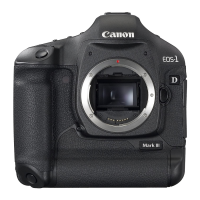


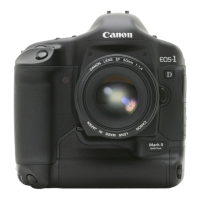

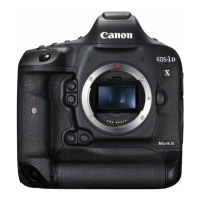
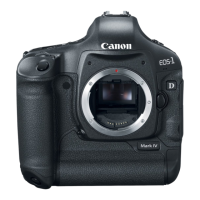




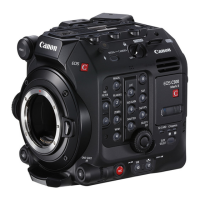

